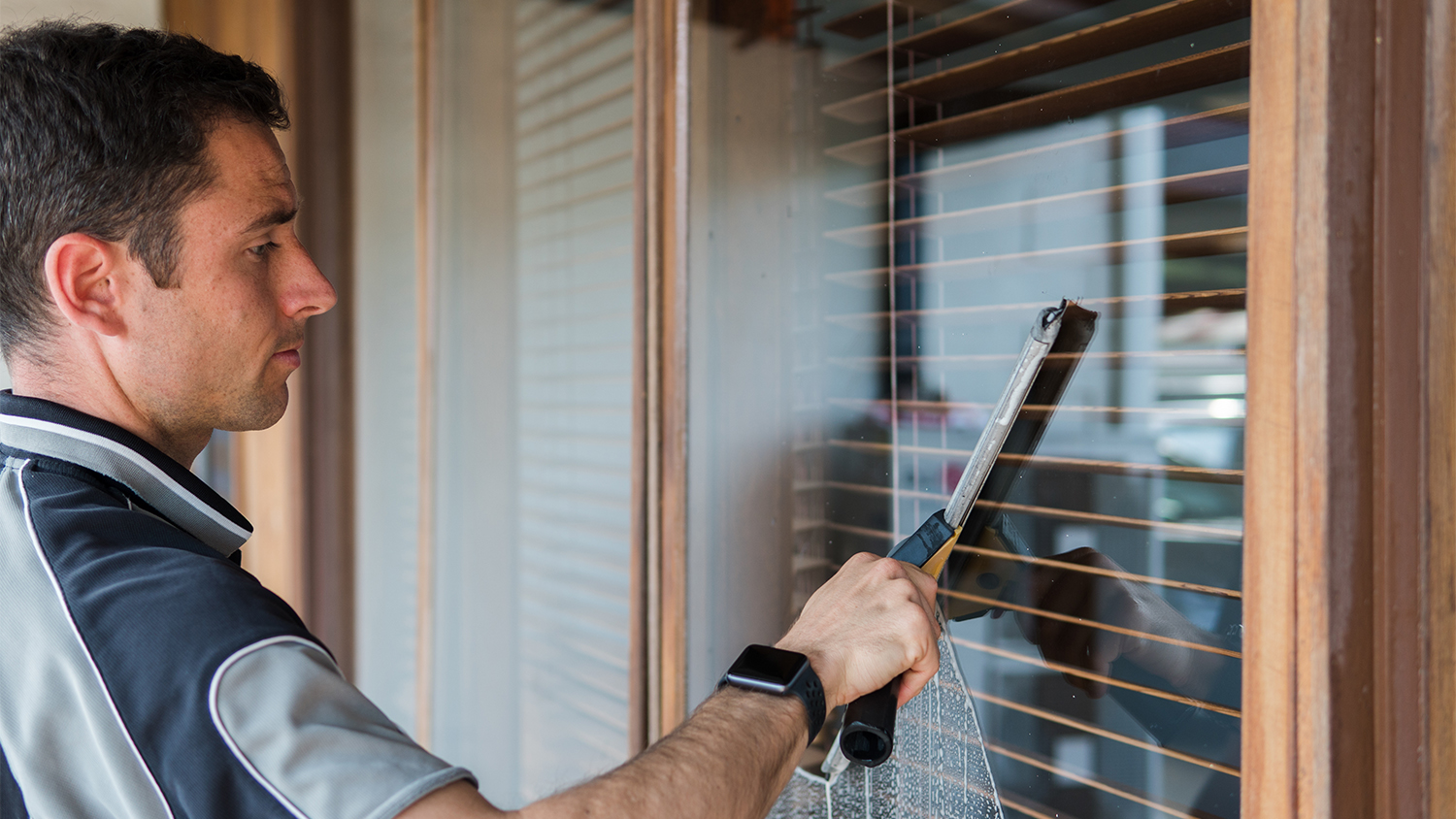
Discover the average window cleaning cost, key price factors, and tips to save money. Get transparent estimates to keep your windows sparkling and your budget on track.
Clean windows look great, but they can also make your home more efficient


Cleaning your windows might seem unnecessary until you do it. Depending on how dirty your windows are, you might be surprised at how much additional sunlight floods your living area and how clean it makes the rest of your space seem. Plus, dirt, dust, and other debris on your windows can actually reduce your home’s energy efficiency, making DIY window cleaning crucial. In this guide on how to clean windows, we’ll discuss the fastest, easiest way to breathe new life into your space.
The one thing you’ll want to consider before you get to work cleaning your windows is the type of cleaner you want to use. You can purchase a commercial cleaner from your local home improvement store, but we prefer all-natural cleaners for things like windows that just accumulate dust and dirt in most cases.
Keep in mind that products with ammonia can destroy window tints and other protective coatings on your glass, so stick with the simple DIY mixture discussed in this guide if you have coatings on your windows.

Your first order of business should be to protect your floors from spills, overspray, and any debris you take off of your windows. You can simply lay down a bath towel in front of your window before you begin.
Before you start using any cleaners, it’s a good idea to remove hard materials from the surface of the glass. It’s not uncommon to find dried paint on interior glass surfaces, especially if you recently repainted or renovated your interior. You might also find excess caulk or mineral deposits from condensation.
To remove these, use your razor blade and gently scrape everything off the surface of the glass, holding the blade at less than a 45-degree angle to the surface. Be very careful not to cut into the sealant around the window glass.

Next, you’ll want to remove the majority of the dirt, dust, and other debris. Use a clean microfiber cloth to wipe the glass down.
Now, you can mix your DIY window cleaner. Add 2 cups of warm water to your spray bottle, followed by 1/4 cup of white vinegar. You can mix more of the solution in that ratio if you need it. For excessively dirty windows, you can also add a few drops of dish soap to the sprayer.

Close your spray bottle, shake up your solution, and then spray the inside surface of your windows liberally. Have your microfiber rag handy to clean up any liquid that drips down onto your windowsill or other components.
Finally, dry your windows with a sheet of black and white newspaper (color ink could come off). The newspaper will soak up any water and vinegar, but also any oils left on the surface. Oil is what leaves streaks on clean windows, so using newspaper is a great way to get a streak-free shine. If your windows are really dirty, you might have to repeat the process.
Cleaning the inside surface of your windows is usually the most impactful in terms of bringing more natural light into your living area and making them look super clean. However, you should also take some time to clean the outside of your windows to remove pollen, dirt, and other debris.
Your final step should be cleaning the tracks of the windows and interior components to help them continue to function and look nice for years to come.
Based on the responses of 10,000 Angi customers, most homeowners requesting window cleaning prefer both the inside and outside cleaned, representing 65.2% of requests. Cleaning the inside only is less common, at 4.3%. Regular cleaning helps remove streaks and smudges, keeping windows clear and improving both the appearance and natural light in a home.
Window cleaning is a really simple and straightforward home improvement project that anyone can do with a minimal investment in supplies. We recommend tackling this project yourself as a part of your spring cleaning and preparation in the fall before winter.
With that being said, you can certainly save some time by hiring a window cleaning company near you. While it only takes about five minutes to clean the inside of one window, doing the inside glass, outside glass, and interior components can be quite time-consuming, especially if you’re doing all the windows in your home at once.
If you’re looking to save money—window cleaning costs around $260 total for all of your windows—then feel free to DIY the work. If you’re looking to save time, hire a professional.
From average costs to expert advice, get all the answers you need to get your job done.

Discover the average window cleaning cost, key price factors, and tips to save money. Get transparent estimates to keep your windows sparkling and your budget on track.

Professional window cleaners aren’t all cut from the same pane of glass. Our guide will clear up how you can find (and hire) the best window cleaning service.

Every homeowner should know how to clean their outside windows, especially if they live in a multi-story home. Here’s how to stay safe while washing outdoor windows.

Save money and still get that professional, streak-free shine on your windows using this guide on how to make homemade window cleaner.

Boost your home’s curb appeal with squeaky-clean windows. Use this guide to learn what professional window cleaners use to clean windows.

If your windows aren't as clear as they should be, here are the window cleaning questions you should be asking a contractor about the project.